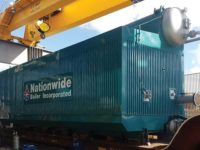
TABLE 1. Maintenance schedule for water-distribution systems.
Best Practices for Efficient Operation
These best practices will help improve the performance of your water-distribution system and reduce operating costs.Monitor the makeup water meter.A quick way to spot a leak in a closed-loop hydronic system is to monitor the meter on the system makeup water inlet. Read the meter daily or weekly. Comparie the readings to historical averages can help identify problems.
Investigate valve chatter.Valve chatter or water hammer coming from control valves may indicate over-pressurization at the valve. High pump pressure or system imbalance can exceed the valve’s actuator shut-off rating and cause water to pass through the “closed” valve and thereby cause the chatter. Water passing through a closed valve causes overcooling or overheating, destabilizing control and wasting energy. Generally, the shut-off pressure limit for two-way valves with vertical actuators should be 25% greater than maximum pump head. Two-way valves with rotating actuators use a much lower torque. Three-way valves do not need as high a limit as vertical two-way valves since they simply divert flow. Rebalancing or, as a last resort, replacing the valve actuator with one with a suitable higher pressure limit may fix the problem. Confirm the correct oper-ating parameters of the valves in your system before making any changes.
Confirm correct control setpoints. Pumps in a variable-flow system are controlled to maintain a minimum differential pressure across the coil for a critical zone or for the coil farthest from the central plant. Make sure the differential pressure setpoint for this coil (there could be more than one) is at the proper design value. Occasionally, these setpoints are raised in an attempt to fix an unrelated problem and then forgotten, wasting pump energy.
Investigate parallel pumping.Most variable-flow systems have one online (or lead) pump and one standby (or lag) pump. At higher flow rates, it can be more energy efficient to operate both pumps in parallel. A typical control sequence is for the lead pump to operate alone until twice its minimum flow rate is reached, then the lag pump cycles on and the two pumps operate together in parallel on the same speed-control signal. Someone on your team or an outside professional should determine the best strategy for your particular system.
Best Practices for Maintenance
Pumps are a vital part of HVAC and process-load applications, in part because pump efficiency directly affects the efficiency of other system components.Inspect system weekly.At least once a week, a building engineer should walk the entire system and check piping, valves, and pumps for leaks and unusual noise. Noise often indicates hidden valve or pump prob-lems. Sources of noise include turbulence, cavitation, release of entrained air, and water hammer.
Ensure adequate water treatment.Scale and sludge deposits reduce flow and impair heat transfer. An ongoing water-treatment program is critical to efficient equipment operation throughout the distribution sys-tem.
Inspect insulation.System efficiency is compromised if the distribution piping has inadequate, dam-aged, or wet insulation. Proper insulation can reduce radiant energy loss by as much as 90% to 95%. Removable lagging pads or snap-on insulation are available for parts such as valves that need periodic maintenance.
Test valve stroke.Test each automatic valve annually. Conduct a test where the valve actuator moves the valve stem through the entire range of the stroke. Failure to move smoothly through the entire range indi-cates a problem.
Maintain optimal condenser water flow.Most condenser water systems include a strainer to remove larger material picked up in the open cooling tower. In areas with high particulate counts in the air, a sidestream mechanical filtration system is recommended to constantly filter the water and remove contaminants.
Test pump efficiency annually.Testing the efficiency of large pumps and comparing it to previous benchmarking data will help spot developing problems.
Balance or recommission the system.If temperature control problems are found in multiple air han-dlers and can’t be otherwise resolved, or if the hydronic system has been expanded or modified, a testing and balancing (TAB) specialist or commissioning engineer should test and recommission the system.ES

